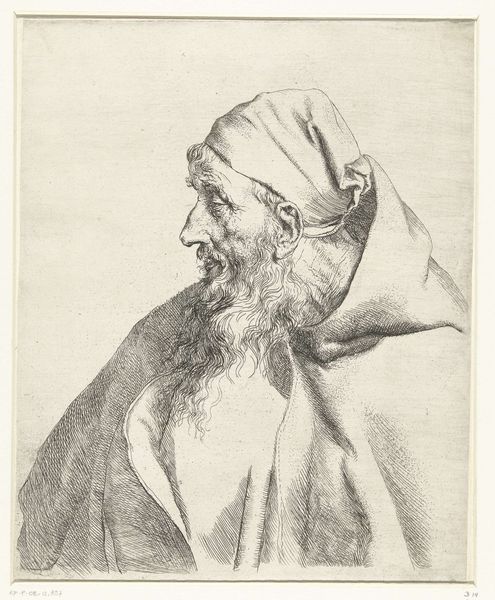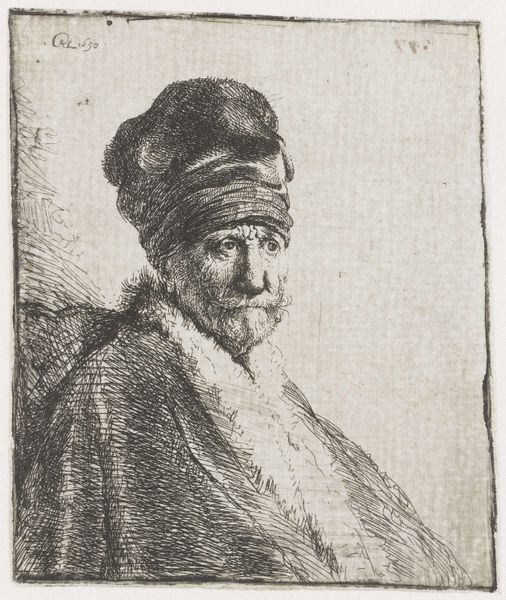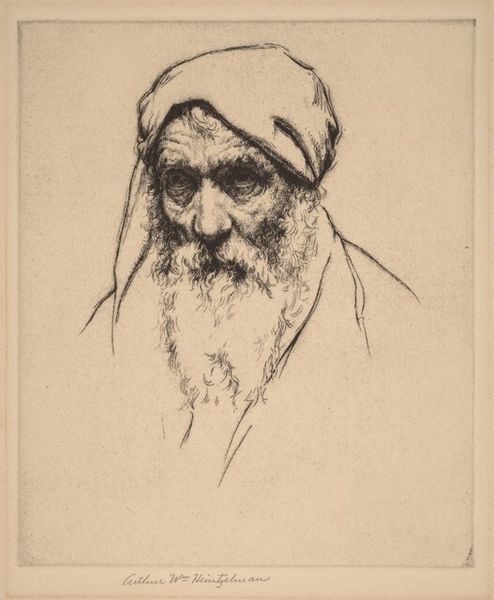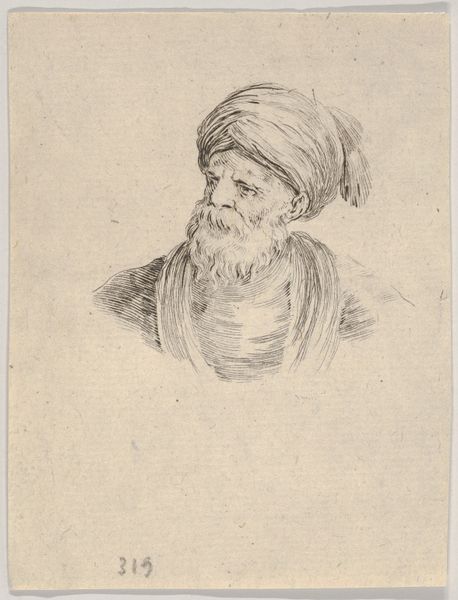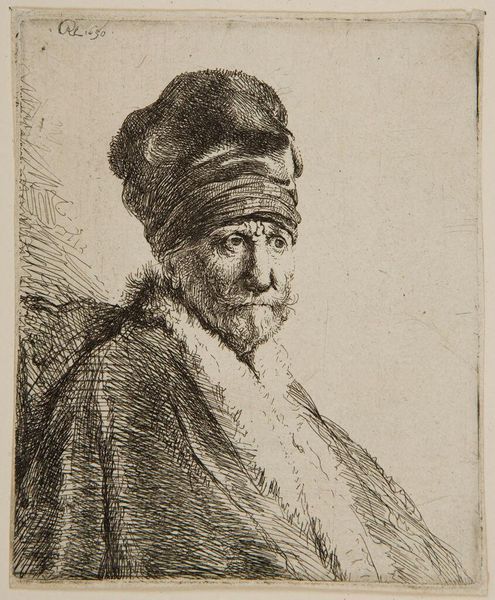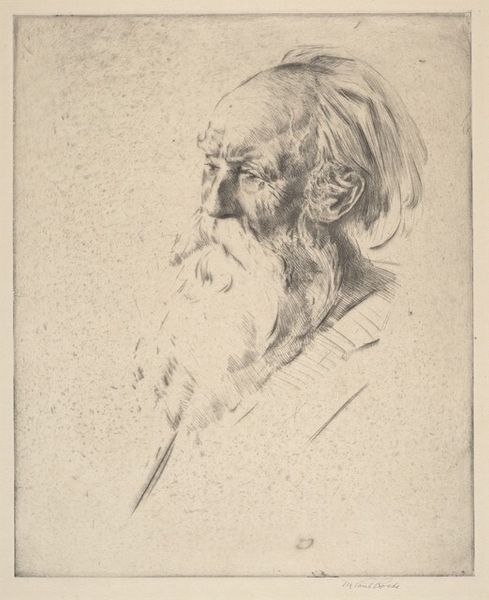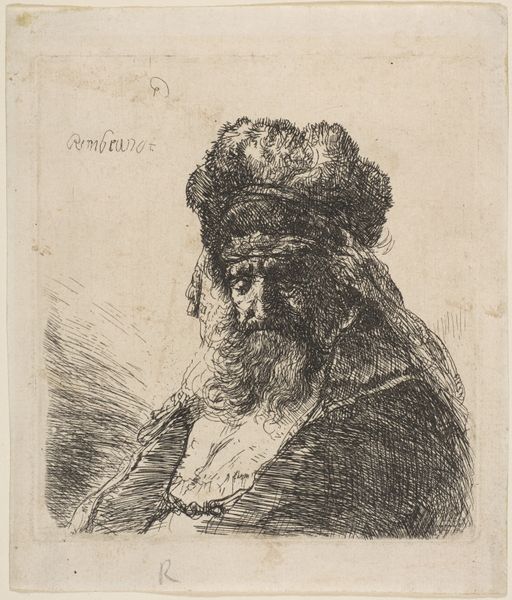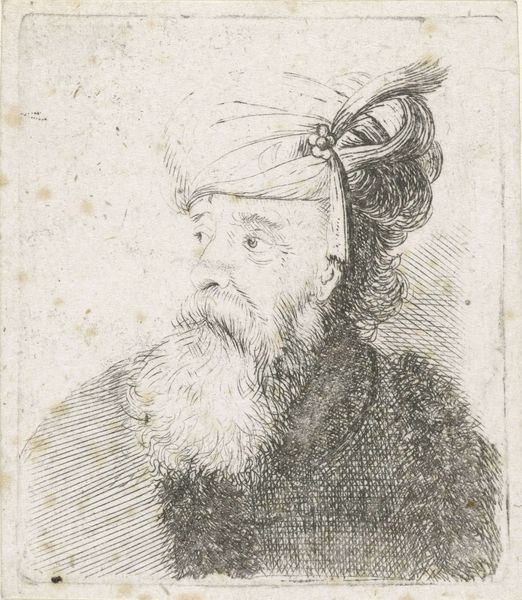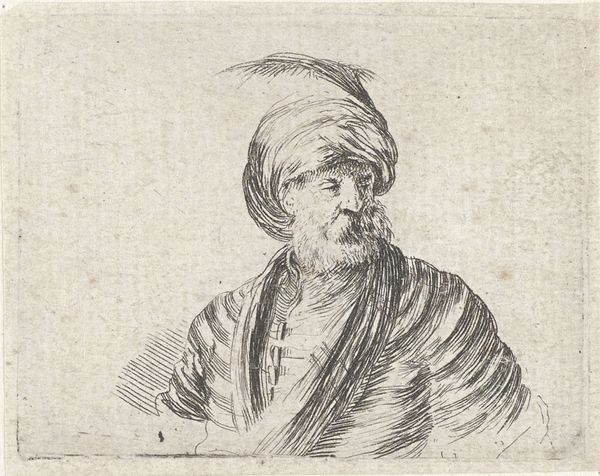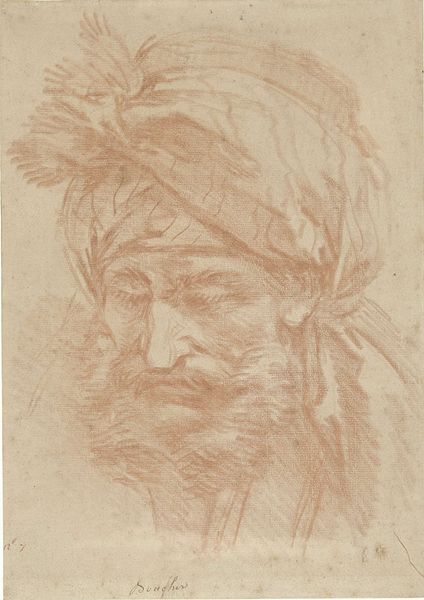
print, etching
#
portrait
# print
#
etching
#
realism
Dimensions: 236 mm (height) x 195 mm (width) (bladmaal), 195 mm (height) x 163 mm (width) (billedmaal)
Curator: We're looking at Carl Bloch's "En romersk jøde," or "A Roman Jew," created in 1868. It’s an etching, a printmaking technique involving biting lines into a metal plate with acid. Editor: My first impression is a study in texture, the interplay of the soft hat and the wild beard is particularly striking given how sparse the detail seems. Curator: Bloch has expertly rendered that texture with simple, economic lines. Think about the etcher’s studio: the smells of acid, the tools of the craft. The plate, likely copper or zinc, would have to be carefully prepared. Editor: Absolutely. And it’s interesting how a medium often associated with multiples can still convey such a distinct personality. Look at the subject's eyes – they seem to carry centuries of stories. That downcast gaze. What symbols do you find most resonant here? Curator: The very act of depiction, of singling out this individual for portraiture, is telling. It implies a certain status, an importance. What does it tell us about Bloch's time that this face, so characterful, was deemed worthy of documentation, of reproduction through print? What was the print market interested in capturing? Editor: Well, consider the time period. 1868, the rise of nation-states, and evolving attitudes towards minority populations. Perhaps Bloch sought to humanize a group often marginalized and stereotyped, a man who represents a lineage going back millennia. Curator: Precisely. Think about how the etching process itself – layering and biting, scraping and reworking – parallels the formation of identity through repeated social interactions. What materials does the act of identity construction make use of? Editor: That’s insightful. So much of the effect is about layering and repetition; from his slightly downturned mouth which communicates resilience. Etchings leave much to suggestion but the cultural coding is all there. Curator: Agreed. The production process, like cultural identity, requires immense time, pressure and care, all rendered with great skill in the material properties of an etching. Editor: A remarkable image; Bloch compels us to think deeply about how people create, perpetuate, and receive stories of identity through visual markers.
Comments
No comments
Be the first to comment and join the conversation on the ultimate creative platform.


